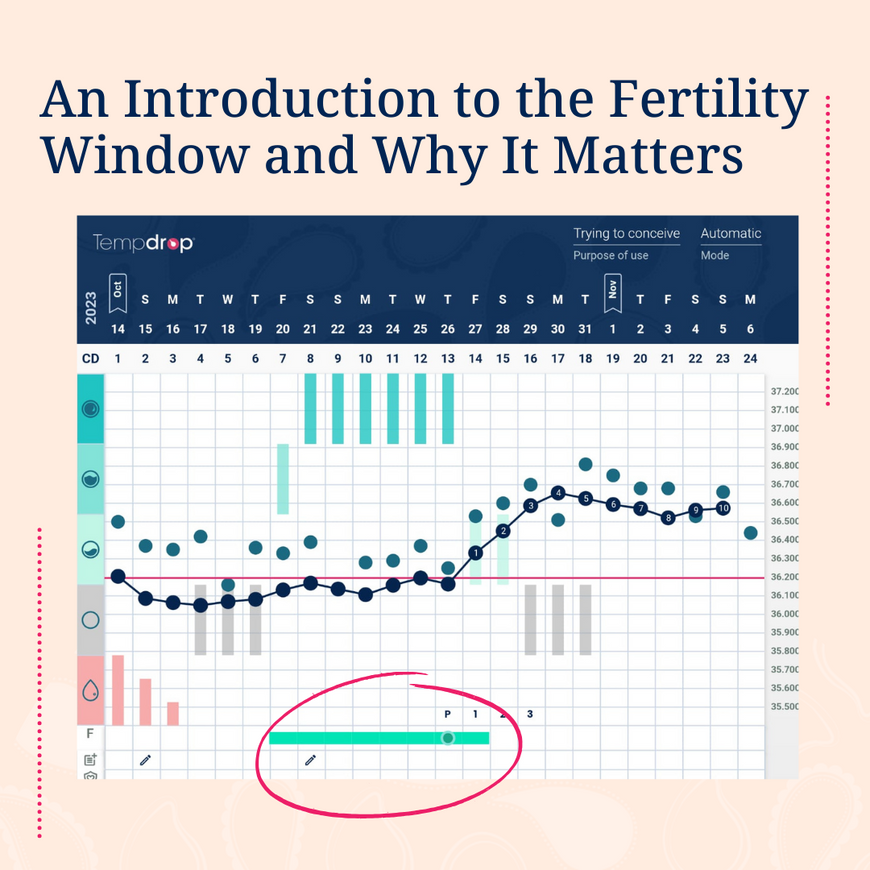Written by Nathalie Daudet
One thing we talk about a lot in the world of fertility awareness, especially when it comes to methods (FAMs), is the 'fertile window', or 'fertility window'.
No matter what your intentions, recognizing your fertile window will be key to your success with fertility awareness
What is the fertile window?
The fertile window is the period of time during which, if a woman has unprotected sex, she has the possibility of becoming pregnant. That's right! Women can't actually get pregnant any day of their cycles!
Between the lifespan of sperm (3-5 days in prime conditions) and the lifespan of an egg when it's released from one of the ovaries (12-24 hours), women can really only become pregnant from unprotected sex 3-6 days in any given cycle.
The fertile window is  the reason that using a fertility awareness method can grow and change with you and your family planning intentions!
the reason that using a fertility awareness method can grow and change with you and your family planning intentions!
A side note on menstrual cycles, talking about "cycles" is not the same as talking about months! A menstrual cycle starts on the first day your period (first day of full bleeding) and goes right through to the day before your next period. A cycle is very rarely 28 days, and most women don't ovulate on day 14. The majority of women will have some variation in their cycle lengths, and the general rule of thumb is that a cycle that is between 24-35 days long is considered normal length.
How can you identify the fertile window?
While the number of days when you can become pregnant is only 3-6 days, it is hard to pinpoint ahead of time which days are part of the fertile window. Instead, in most FAMs, you open the fertile window by using real-time observations, OR a calculation and observation combined as a double check. And then, later you close the fertile window (usually by confirming ovulation) through observations.

Because it's difficult to know exactly which 3-6 days you are fertile, most women have a fertile window marked on their chart starting a few days before they actually could become pregnant, and 2-4 days of observations of infertile patterns before they confirm it has, in fact, completely closed.
Remember: How you open and close your fertile window depends exclusively on the method you choose to use, so you should become familiar with those rules. For example, Sensiplan uses extra calculations to make sure your fertile window is opening appropriately.
Confirming ovulation and closing the fertile window relies on a couple key fertility markers coming together that let you know ovulation has happened. In symptothermal methods of fertility awareness, this is typically based on 3-4 days of high temperatures, as well as a count of infertile mucus observations.
For more information on using fertility awareness-based methods, and to start learning how to chart your cycle, check out Tempdrop’s free guide to fertility awareness!

Nathalie Daudet is a social worker and FEMM instructor based in Winnipeg, Canada. She discovered fertility awareness after searching high and low for a non-hormonal method of birth control. After learning the magic of fertility awareness and the gift of body literacy, she decided to pursue formal fertility awareness training and share the knowledge of fertility awareness with women looking for a natural birth control option. Fertility Awareness Project is the hub for Nathalie’s FEMM classes in both group and individual formats, online and in person in Winnipeg. If you love this post and would like to thank Nathalie, shop Tempdrop with Nathalie's unique referral link.

